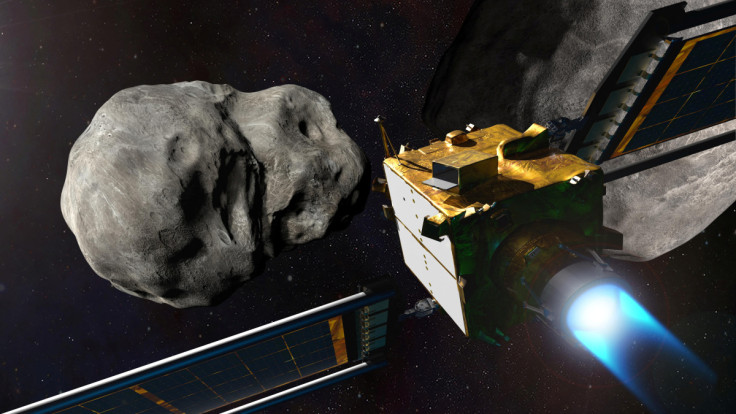Telescope In Chile Captures Comet-Like Tail Of The Asteroid NASA Hit [Photo]
KEY POINTS
- The SOAR Telescope in Chile captured an image of Dimorphos after the impact
- The image shows a rather long debris trail like that of a comet
- The telescope's observations will help shed light on Dimorphos and the impact's aftermath
NASA successfully hit an asteroid with a spacecraft for the Double Asteroid Redirection Test (DART) mission. The asteroid was left with a comet-like tail, as per observations by a telescope in Chile.
A stunning view of asteroid Dimorphos was captured by the Southern Astrophysical Research (SOAR) Telescope in Chile, NOIRLab noted in its photo release. In the image, which was taken two days after the deliberate impact of the DART spacecraft with Dimorphos on Sept. 26, one can see the dust trail that blasted from the asteroid, making it look rather like a comet.
According to the organization, the dust trail of debris is a whopping 10,000 kilometers (about 6,000 miles) long from the point of impact.
"Nailed it! The SOAR Telescope in Chile, operated by @NOIRLabastro, captured the more than 10,000 kilometers of trail left behind after @NASA's DART spacecraft hit Dimorphos," NOIRLab wrote on Twitter.
Nailed it! The SOAR Telescope in Chile, operated by @NOIRLabastro, captured the more than 10,000 kilometers of trail left behind after @NASA's DART spacecraft hit Dimorphos.
— NOIRLab (@NOIRLabAstro) October 3, 2022
Credit: CTIO/NOIRLab/SOAR/NSF/AURA/T. Kareta (Lowell Observatory), M. Knight (US Naval Academy) pic.twitter.com/F9FUsELA55
"It is amazing how clearly we were able to capture the structure and extent of the aftermath in the days following the impact," Teddy Kareta of the Lowell Observatory, who captured the dust plume using the SOAR Telescope, said, as per NOIRLab.
Apart from providing a stunning view of the aftermath of the impact, such observations can actually provide valuable information. For instance, they could shed light on the "nature" of Dimorphos' surface and help scientists figure out important details such as how much material actually ended up getting ejected because of the impact, according to NOIRLab. They could also help determine whether the collision caused larger chunks to blow off of the asteroid or if it mostly ejected fine dust.
"Now begins the next phase of work for the DART team as they analyze their data and observations by our team and other observers around the world who shared in studying this exciting event," Matthew Knight of U.S. Naval Academy, who captured the dust plume with Kareta, said in the NOIRLab release. "We plan to use SOAR to monitor the ejecta in the coming weeks and months."
Certainly, we have had incredible views of the historic mission. Previously, NASA has shared stunning views of the DART impact, as captured by the Hubble Space Telescope and the James Webb Space Telescope. Other instruments, both in space and on Earth, also captured the moment of the impact.
Now that the mission for DART to collide has proven to be a success, the goal now is to figure out if the impact actually caused a change in Dimorphos' orbit. The asteroid was not a threat to Earth, but the mission was the first-ever demonstration to see whether we can deflect an asteroid's orbit in space via kinetic impact should the threat arise in the future.
In 2024, the European Space Agency (ESA) will also be launching the Hera mission, which is expected to reach Dimorphos in 2026. The so-called "spacecraft detective" will look at the effects of the impact up-close.

© Copyright IBTimes 2024. All rights reserved.






















